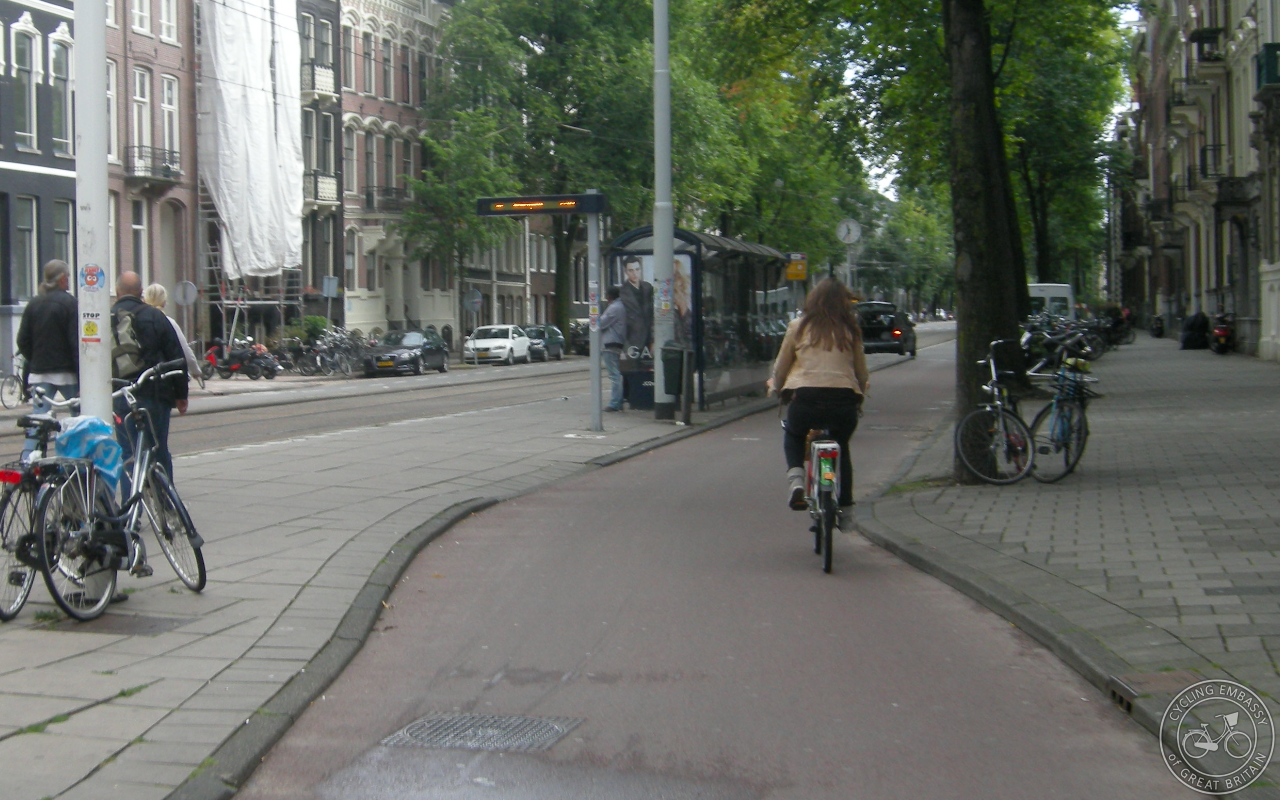Cycle tracks and bus stops - a response to Transport for All
The Cycling Embassy of Great Britain notes the concerns raised by Transport for All regarding proposals for 'bus stop bypasses' - cycle tracks passing behind bus stops - in London.
Clearly, the running of a cycle track between a pavement and a waiting area for buses is less ideal for pedestrians than an uninterrupted pavement. An opportunity for conflict presents itself, where none existed previously.
However, we feel that some of the concerns are overstated. Designs like this have been common practice in many European countries for decades, in particular in the Netherlands and Denmark, countries with high levels of both public transport use and cycling. They would have been abandoned a long time ago if they were detrimental to public transport users, pedestrians and cyclists.

It is not the case that cyclists would necessarily 'have priority' along the cycle track, in all situations. We feel that priority should be accorded on a case by case basis, and would support the use of zebra crossings to give clear priority to pedestrians, as and where they are needed. Again, this kind of design feature is common on the continent. We could also support the use of speed humps to slow cyclists down and to alert them to potential conflict with pedestrians.

While crossing cycle tracks is understandably an issue of concern to visually impaired people, it should be observed that no journey in London can possibly be free from interactions with cyclists. Cyclists are increasingly plentiful on the existing road network, a road network that will inevitably have to be crossed by blind or partially sighted people on their way to bus stops. Interaction is inescapable, and to that extent the issue is one of resolving how that interaction occurs, rather than trying to wish it out of existence. Tactile paving and kerbing should be used to in precisely the same fashion as for a convention road crossing, as in the photograph above. We also feel that shared use pavements, without any demarcation between cyclists and pedestrians, are much worse, particularly for the visually impaired.
The bus stop bypass design should also incorporate a large waiting area where pedestrians can mount and dismount from public transport in comfort and security. It is emphatically not the case that 'a wheelchair user coming off a bus down the ramp would... [be] coming off into a line of moving cycle traffic', as the Transport for All briefing suggests. Passengers from a bus should plainly not be disembarking straight into a cycle track, any more than it would be acceptable to be disembarking into a road.
We would stress that the correct solution to any potential conflict between bus users and cyclists lies in clear and coherent design, and not in diverting cyclists into the carriageway. It is important to note that disabled people would benefit tremendously from inclusive cycle infrastructure design of precisely this form, that would allow them to travel around our streets in comfort and security, and without having to negotiate out around buses. In particular, this includes those who use bicycles as mobility aids; without cycle tracks passing behind bus stops, these users will have to pass on the outside of buses, in heavy motorised traffic. They would be substantially disadvantaged.
More analysis of this issue from John Dales on the Urban Movement blog
